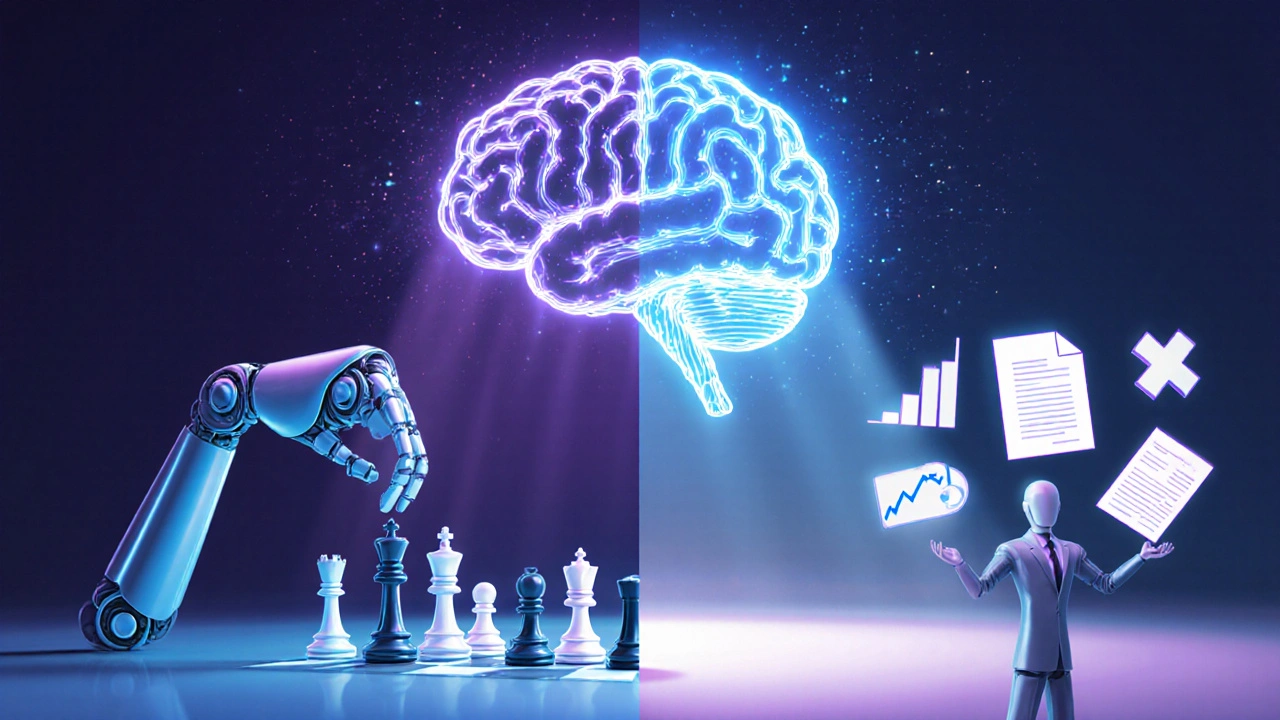Artificial General Intelligence (AGI): What It Is and Why It Matters
When you hear "AI", most people picture chatbots, recommendation engines, or self‑driving cars. Those are examples of narrow AI – systems that excel at a single task. AGI, on the other hand, aims to match human‑level thinking across any subject. In plain terms, AGI would be a machine that can learn, reason, and solve problems the way you do, without being limited to a specific job.
Why should you care? If AGI becomes real, it could reshape everything from healthcare to climate modeling, unlocking solutions we can’t even imagine today. But the road to that future is full of technical puzzles and ethical dilemmas. Understanding the basics helps you spot real breakthroughs from hype and think about how this technology might affect your life or career.
How AGI Differs From Today’s AI
Modern AI systems are built on massive data sets and narrow objectives. A language model can write text, but it can’t drive a car or diagnose a disease without a separate, specialized model. AGI would combine those abilities under one umbrella, using a flexible learning engine that adapts on the fly.
Another key difference is transfer learning. Humans can take a skill learned in one area and apply it elsewhere—think of how a programmer can pick up a new language quickly. Most current AIs need to be retrained from scratch for each new task. AGI’s goal is to make that transfer seamless, saving time, resources, and energy.
Current Roadblocks and the Path Ahead
Right now, we’re far from true AGI. The biggest hurdles are computational power, algorithmic design, and safety. Even the biggest supercomputers struggle with the kind of brain‑like processing AGI would need. Researchers are experimenting with neural‑network architectures, reinforcement learning, and hybrid models, but progress is incremental.
Safety is another hot topic. An AGI that can act autonomously could cause unintended harm if its goals aren’t aligned with human values. Teams at places like OpenAI and DeepMind are already publishing safety guidelines, but there’s no consensus yet on the best approach.
If you want to stay in the loop, start by following a few reputable blogs and podcasts that cover AGI research. Learning the basics of machine learning, reading papers on reinforcement learning, and even dabbling with open‑source models can give you a solid footing. The journey to AGI is a marathon, not a sprint, and every bit of knowledge you add now puts you ahead when the breakthroughs finally arrive.
Bottom line: AGI promises a future where machines think like us, but getting there will take years of research, careful planning, and public conversation. Keep an eye on the milestones, question the hype, and think about how this technology could change the world you live in.

The Exciting Future of Artificial General Intelligence
Artificial General Intelligence is no longer theoretical. Discover how AGI is evolving, what it can do by 2030, why alignment matters, and how it will reshape jobs, education, and human potential.

How Artificial General Intelligence Shapes Decision Making
Explore how Artificial General Intelligence reshapes decision making, from data synthesis to ethical governance, with real-world use cases and practical implementation steps.

Artificial General Intelligence: The Road to Autonomy
Artificial General Intelligence (AGI) promises a future where machines could think, learn, and even make decisions like humans. We're exploring how close we are to this reality, the challenges we face, and the ethical implications it brings. Dive into understanding the potential of AGI and its impact on our daily lives, industries, and future innovations.

Understanding the Rise and Future of Artificial General Intelligence
Artificial General Intelligence (AGI) holds the potential to revolutionize various industries by performing any intellectual task a human can do. Its development, marked by promising steps forward, could redefine what we understand as intelligence. However, it poses significant ethical and safety questions. This article delves into the current state of AGI, its potential applications, and the challenges that lie ahead. Learn how AGI might change our world and what cautious approaches are necessary to ensure beneficial outcomes.